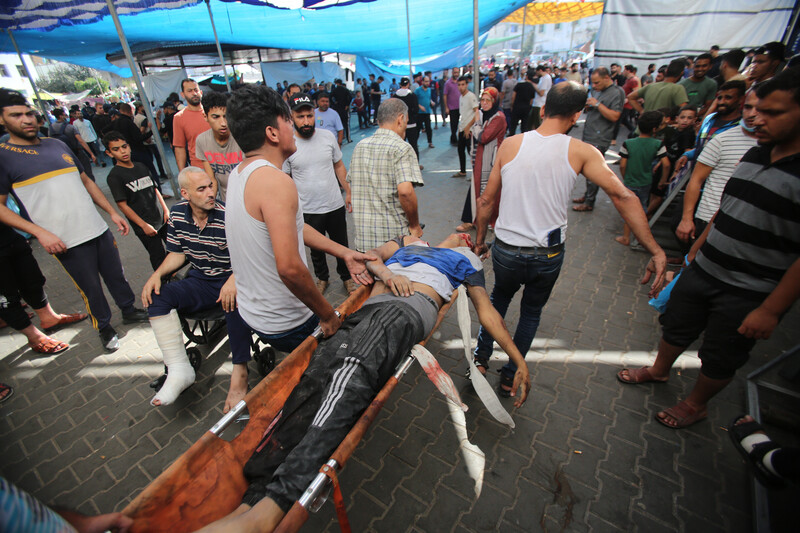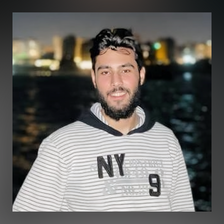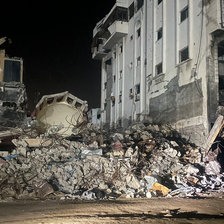The Electronic Intifada 25 March 2024

A man is rushed to hospital following one of Israel’s many attacks on the Shujaiya neighborhood.
APA imagesNafez left his home with enormous reluctance.
Several days after declaring its genocidal war, Israel dropped leaflets containing an order to evacuate the northern part of Gaza.
Like so many others, Nafez and his family hastily discussed what to do.
Nafez agreed that he would drive his parents from where they lived in Shujaiya – a neighborhood of Gaza City – to Deir al-Balah further south.
The initial plan – if plans can be drawn up under such circumstances – was that Nafez would come back to Shujaiya straight away. Yet with so many people fleeing their homes, it took him a lot longer to reach Deir al-Balah than he had expected.
His father insisted that he remain in Deir al-Balah.
And so Nafez and his parents took shelter in a school. That meant sleeping on the floor and having to share bathrooms with a large number of other people.
After nine days, Nafez defied Israel’s orders by going back to Shujaiya.
It was a frightening experience. The sound of bombardment was constant – particularly after darkness fell.
Back in Shujaiya, Nafez struggled to keep in touch with other members of his family.
Finding a phone signal was an ordeal. And when he managed to contact anyone by phone, the call would soon cut out.
Any news he received tended to be bad. He heard of relatives and acquaintances who had been killed by Israel.
“Scared to death”
Israel circulated more leaflets, once again telling people to leave their homes.
“I felt more terrified,” Nafez said. “I would wake up suddenly at night to check that the ceiling was still there.”
During the last week in October, the home of Nafez’s neighbors was bombarded in an Israeli airstrike.
Nafez felt the explosion. It was as if his chest had been wrenched.
“I was scared to death,” he said.
When Nafez looked out his window, the entire street was covered with dust.
He ventured outside. There was an acrid smell in the air.
As the dust started to lift, he saw a man on the ground who could barely move. The man’s face was covered with blood.
“When I wiped his face, I realized he was my uncle Yousef,” Nafez said.
As no ambulance was available, Nafez brought Yousef to hospital in a cart.
They went to al-Shifa, Gaza’s largest hospital. It was packed with people who were wounded.
Yousef had a fractured skull. His condition was life-threatening but – with the hospital staff overstretched – he had to wait three days for surgery.
“The doctors advised us to go home,” Nafez said. “It was too dangerous to stay at al-Shifa hospital. Israel was threatening a ground invasion.”
Shujaiya has been subjected to many attacks – a number of which have involved massacres – during the current war.
“Suffocating”
On one occasion in November, Nafez hurried from his home with the intention of helping people who had just been injured in an airstrike.
“As soon as I stepped outside, the shell hit our neighbor’s house,” he said.
Nafez ran for cover in another neighbor’s home. The building beside it was then hit by a shell.
He kept running and tried to take shelter in a building at the end of the street. It, too, was hit by a shell.
Nafez found himself covered in rubble. “The dust was suffocating,” he said.
Although his legs were injured, Nafez managed to escape from the rubble.
“I kept limping until I reached a market,” he said. “I was in a state of shock but I started to calm myself down. ‘I’m still alive,’ I told myself.”
Muhammad, a cousin of Nafez, spotted him and tried to help. Suddenly, Israel fired a shell on the street they were in.
“I was thrown back due to the force,” Nafez said. “At that time, I thought I was going to die.”
Nafez looked in front of him and saw someone lying on the ground, covered with blood.
It was his cousin Muhammad – still alive but with major injuries.
A number of people succeeded in dragging Muhammad away. The shelling continued as they did so.
When a very brief truce came into effect in the last week of November, Nafez saw many people heading southwards.
Nafez rode his bike on the day the truce began.
“Gaza City was murky,” he said. “It was a ghost town.”
The following day, he took a donkey-drawn cart to al-Kuwaiti roundabout, near Gaza City. Israel had set up a military checkpoint there.
About 30 meters from the roundabout, he got down from the cart and walked toward the checkpoint.
He held up his ID card with one hand and carried a plastic bag, containing food, in the other.
An Israeli soldier shouted. The soldier ordered Nafez to come with him.
“This is it,” Nafez thought. “They will either arrest or kill me.”
The soldier told him to throw his plastic bag on the ground, keep on raising his ID card and get on with his journey.
“When I reached the end of the road, I saw a dead body on the road,” Nafez said. “The Israeli soldiers killed that man as he was trying to return back to the north from the south.”
When Nafez made it to Deir al-Balah, his father could not believe his eyes.
“My family thought I had been killed,” Nafez said.
Terrible news has reached Nafez in Deir al-Balah – his family’s home in Shujaiya is no longer standing.
He deeply resents his displacement.
“Even if it has been destroyed, I know every corner of our house,” he said. “Shujaiya will always be the place where our loved ones lived.”
Khaled El-Hissy is a journalist from Jabaliya in the Gaza Strip. Twitter: @khpalestined
Khaled Al-Qershali is a writer and translator.





